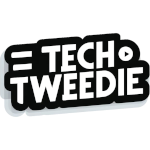
Thinking Environment Meetings
In today’s remote work environment, the significance of effective team meetings cannot be overstated. These gatherings are pivotal for aligning goals, addressing challenges, and fostering team cohesion.
However, not all meetings are created equal. The introduction of a Thinking Environment, as outlined by Nancy Kline in her book “Time to Think,” offers a transformative approach to traditional meetings. When combined with the structured reflection of retrospectives, this approach can elevate the effectiveness of team meetings.
This blog post explores how integrating the principles of a Thinking Environment with retrospectives can create a regular team meeting structure that is both reflective and productive, using a real-life example to illustrate its impact.
The Thinking Environment: Foundations for Effective Communication
A Thinking Environment prioritises conditions where individuals can think for themselves with clarity and creativity. Kline identifies ten components essential for fostering such an environment:
Attention, Incisive Questions, Equality, Appreciation, Ease, Encouragement, Feelings, Information, Diversity, and Place. These principles ensure that each team member feels valued, heard, and empowered to contribute their best ideas.
Retrospectives: Reflecting for Improvement
Retrospectives are structured meetings used by teams, especially in agile methodologies, to reflect on their recent work cycle. The goal is to discuss what went well, what didn’t, and how processes can be improved moving forward. While retrospectives focus on reflection, incorporating a Thinking Environment enriches these discussions, making them more inclusive and insightful.
Merging Concepts: A New Approach to Team Meetings
By blending the Thinking Environment with retrospectives, teams can adopt a meeting structure that enhances engagement, creativity, and productivity. This approach involves structuring meetings around key principles of listening, equality, and appreciation, while systematically reflecting on performance and planning for improvement.
A Real-Life Meeting Example
Guidance for creating a Thinking Environment in team meetings emphasizes active listening, non-interruption, and waiting for cues to contribute. Here’s how as an Systems Architecture Manager I applied these principles:
- Guidance for Participation: Participants were advised to minimize distractions, refrain from interrupting, and contribute only when invited or after someone had finished speaking.
Here were the guidelines;- When someone is presenting, everyone is listening, try and minimise everything else on your screens if you can.
- Don’t interrupt anyone, unless the meeting char is moving the meeting to the next agenda point.
- Wait until someone invites others thoughts and ideas, or they have indicated they have finished.
- Agenda Structure: The meeting followed a structured agenda that included reflecting on the past week’s successes and challenges, company updates, current blockers, focus for the next week, learning points, and an open discussion segment.
Here is the agenda;- What’s gone well and not gone well this week? 1 min for each.
- Company updates
- What’s blocking you at the moment
- What’s your focus for next week
- What are you learning at the moment
- Anything else anyone wants to discuss
Outcomes I found of the New Meeting Structure
The adoption of this meeting structure led to significant improvements:
- Team members felt genuinely heard, as evidenced by the attentive and uninterrupted listening.
- The structured reflection enabled a comprehensive understanding of what was hindering the team, allowing for targeted solutions.
- Encouraging the sharing of learning points and next week’s focus fostered a culture of continuous improvement and forward planning.
- The open discussion segment ensured that all team members had the opportunity to raise additional points, enhancing inclusivity and team cohesion.
- Overall, the team experienced increased productivity and a stronger sense of collaboration.
Conclusion
The integration of a Thinking Environment with the reflective practice of retrospectives offers a powerful framework for conducting team meetings. This approach not only ensures that team members feel valued and heard but also facilitates a deeper understanding of team dynamics and challenges. The real-life example provided demonstrates the potential for such meetings to enhance productivity, foster a positive team culture, and drive continuous improvement. By adopting this meeting structure, teams can create a more engaging, effective, and thoughtful working environment that propels them towards their goals.
Revisions and Publications
- First published on https://helpmewithmy.technology on 2022-12-18
- Migrated to new blog https://techtweedie.github.io on 2024-01-03
